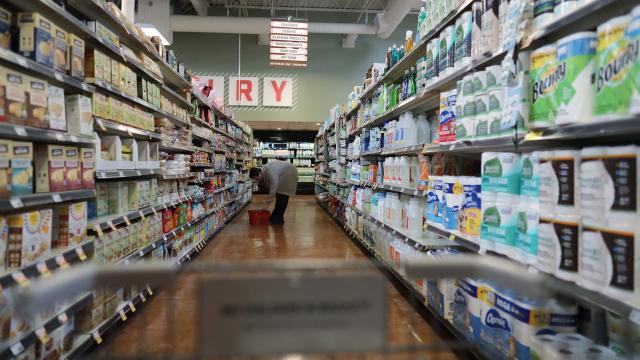I use dry red lentils, black peppercorns, and capers a lot. And now, I’m out. Rather than walk to the store in the cold, I’ve been thinking about taking advice from Carla Lalli Music’s cookbook and ordering these pantry staples online. That might be more time-efficient for me, but is it more energy-efficient for the planet? The answer, according to new research, depends on where I do my online shopping.
In a study published in Environmental Science and Technology on Wednesday, researchers compared the greenhouse gas footprints of the different ways people shop for fast-moving consumer goods, which are basically things you can buy from a supermarket that don’t require refrigeration. Think dish soap, shampoo, snack foods, and dry spices. The three ingredients I’m looking for all happen to be fast-moving consumer goods.
It turns out the traditional “bricks-and-mortar” form of shopping”as in, go to store, buy things, come home”is more greenhouse gas-efficient than one kind of online shopping but less than another.
There are two main kinds of e-commerce. The first is known as “bricks and clicks” and involves ordering items online and having someone shop for you and mail or deliver your products to your door. That’s the model services like Peapod and Amazon, Jet, or Thrive Market.
The researchers compared these types of e-commerce with traditional shopping, examining the greenhouse gases associated with transport, warehouse storage, delivery and packaging. Using UK data, they found that it’s more efficient to buy something using the bricks-and-clicks method than it is to go to the store 63 per cent of the time. That’s largely because people usually drive to buy groceries anyways, though that’s not true in all places.
“In countries such as the Netherlands and China where consumers often walk or cycle to a shop to buy products, bricks and mortar is often the greenest method,” Sadegh Shahmohammadi, the study’s lead author, told Gizmodo in an email.
People also tend to buy more stuff from grocery stores when they shop online as opposed to in-person, perhaps because they’re not the ones loading it into their cars or because an online shopping cart never looks as full as a real one, which also makes it an efficient option. It should be noted, that doesn’t necessarily make it the best option overall”workers have recently been calling Instacart out for their poor labour practices”but in terms of climate, it’s often your best bet.
But 81 per cent of the time, going to the store is more efficient than shopping from a pure player online, because stuff purchased from online-only retailers generally has to travel a much longer distance to make it to your door. People also generally use online-only retailers to buy fewer items at a time than they’d buy if they made a trip to the grocery store or ordered delivery from a supermarket, which makes each trip less energy-efficient (guilty as charged). And these vendors also tend to use a ton of extra packaging. As if I needed more reason to stop shopping on Amazon.
While the study is a good starting point, there’s much more to learn about the impact of each kind of shopping. The analysis doesn’t factor in the emissions associated with the buildings and workers, the data and devices used by workers and shoppers, or the amount of packaging for brick-and-mortar and bricks-and-clicks shopping, because it assumes packaging is negligible compared to all the other emissions the transaction produces.
It also doesn’t factor in the energy impact of returning items, which requires additional transportation and could result in products getting lost, damaged, or expired, thereby creating the need to produce more. Previous research has found that more things are generally returned when customers buy them online and more unsold products get wasted. A large number of online retailers simply throw out returned items to save money on labour and storage.
“However, we do not know whether the impacts of losses for FMCG [fast-moving consumer goods] is higher in the online channels or in brick and mortar,” the study says. And the study doesn’t even begin to delve into how all kinds of shopping platforms encourage people to purchase more stuff, which also increases emissions.
No matter which way you choose to shop, the authors identified ways that shoppers and retailers can make the experience more energy-efficient. Online shoppers could save shipping emissions by buying multiple products from the same supplier. Online retailers could bundle items together instead of shipping individual items when they’re ready and switch from delivery vans to electric cargo bikes for the “last mile” of a delivery between a warehouse and your home. And when shopping in person, walking or biking to a store is more carbon-efficient than driving.
I don’t have a car, and there’s a little grocery store around the corner from my apartment. So in this case, to get my lentils, pepper, and capers, I think I’ll just walk to the shop.
